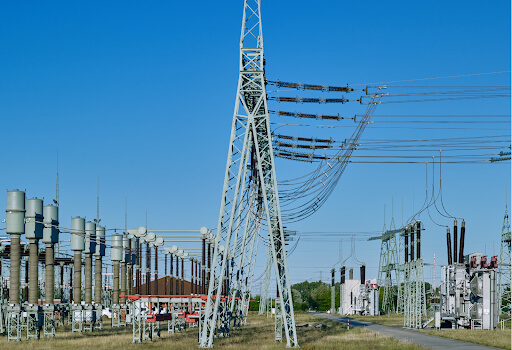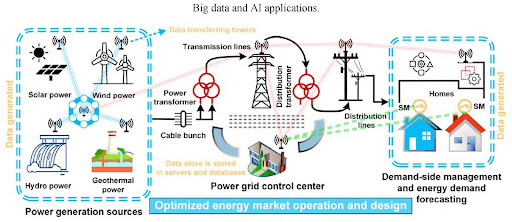 1-800-805-5783
1-800-805-5783 
Energy is a critical factor in any industry or nation’s development; efficient methods of producing and supplying uninterrupted energy at a lower cost are necessary for sustainable economic growth. Hence, innovative technologies are needed to reduce energy losses and make the energy sector more efficient by delivering smooth flow over several energy inputs or sources. The power and Energy sector is constantly bombarded with the challenge of supplying increased bulk amounts of efficient, environmentally friendly, easy-to-handle, low-cost energy that can be transported without heavy transmitting losses. So, this industry heavily depends on investments in relevant scientific research and development. The traditional outlook of innovation in this sector ( closed innovation) has been replaced by the new ideology called Open Innovation (OI). This helped the energy industry harness huge revenue in the last decade.
To face the growing energy demand, extensive research was done on variable renewable energy (VRE) resources, which eventually led to disruptive innovations in harnessing energy from sources like ‘bioenergy,’’ pulp and paper,’ ‘wind’ etc. The share of Global Energy Generation through renewables has gone up to 23.2%, according to the IEA report.
Technology innovations in Smart grids
The deep penetration of ever-developing information technology in the energy sector has led to the introduction and enhancement of smart grids. Grave Environmental concerns about energy generation and transmission have met with some respite after developing smart grids. The global smart grid investments were USD 270 billion in 2019 and will go beyond USD 290 billion by 2021. Technological disruptions in the field of smart grids have witnessed the incubation and growth of technologies like distributed generation and microgrids.

Energy policies across different regions also play an important role in the research, development, and implementation of new technologies in the energy sector. ‘ Decorbonbated Energy’ should be the future goal of all developing nations. Keeping this goal at the center of research and development, countries are now trying to create more and more ‘Smart Cities’ that have renewable energy sources and run with AI-powered smart energy networks. The challenges large industries and businesses face in reaching sustainability goals while considering the biggest challenge, i.e., the least environmental impact, can largely be overcome using 5G networks and AI-powered networks in energy and power industries.
Big Data and AI technologies in the energy sector
The role of AI and Big Data in ‘predictive maintenance’ and ‘efficiency boosting’ in the energy sector is a promising research area for the ever-increasing energy demand.
The integration of variable energy sources, especially renewable energy sources, energy supply, and the demand for smart and intelligent digital circuits that can analyze and act automatically, can be achieved through AI-based neural networks. According to the report by ScienceDirect’s Journal of Cleaner Production,’ AI has the enormous power to integrate IoT with renewables and can do a remarkable make-over to the existing energy sectors. After the AI deployment, the Energy industries may be called ‘ smart energy industries ‘ with sophisticated power electronics, supercomputers, etc. According to the report ‘ The United States Power Policy 2018’ on four crucial objectives for AI development, ‘The Government of UAE: 2017 ’ wishes to promote research and implementation of AI in many sectors, including renewable energy. Many other developed and developing countries followed forte and started investing in the deployment of AI in the energy industry.
Big data and AI applications:

Source: ScienceDirect
According to the ‘ Journal of Big Data’ published by Springer, the power systems incorporating multimedia technologies in power dispatching and communication systems become more stable and reliable. Implementing big data in power systems has also proven to make accurate predictions and improve evaluation efficiency.
A case study of China’s coal-fired power industry on energy conservation potentials using the latest technology: Energy policy.
This study integrates the ‘ Conservation Supply Curve Approach (CSC)’ and ‘ Break Even Analysis’ to analyze the benefits of 32 new technologies in coal-fired power industries. According to this research paper, if these 32 new technologies are used in the coal-fired power industry, there is a conservation potential of 275.77 Mt with a cost of 238.82 billion yuan.
Conclusion:
New technologies like AI, Big Data, and more are redefining the meaning of efficient power generation. With the demand for renewable power increasing worldwide every day, minimizing power losses during power generation and transmission has become the primary goal of all the stakeholders involved in this industry. Predictive models of power networks using AI and Big Data that can accurately predict sudden power losses and discrepancies are becoming the need of the hour. Raising Environmental concerns vowing to the growing demand for power renewables can be put to rest by using intelligent technologies like AI-powered neural networks and 5G in the power industry.
Tags: energyindustry, Technology